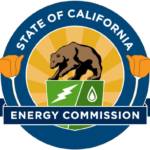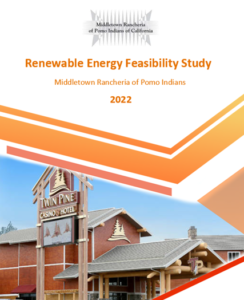Examples of fossil fuels include, coal, natural gas, derived gas, crude oil, petroleum products and non-renewable wastes.


The Tribe has seen the dramatic impacts of climate change, from recent droughts, to the 2015 Valley Fire that left the community devastated, and in 2019, the Kincade fire again resulted in regional evacuations. The Kincade fire resulted in severe damage to PG&E electricity transmission equipment causing significant regional power outages.
Subsequent power outages required to upgrade regional transmission equipment resulted in power outages that have negatively impacted the tribal enterprises, operations, and residents. Energy planning is an important factor in the continued resilience and capacity building inherent to Tribal Sovereignty. Growing capacity by creating baseline documents will allow for enhanced program development, planning and implementation by the Tribe. This project funds necessary energy planning and includes essential analysis of current hazards and climate change vulnerabilities of the Tribe’s energy infrastructure and use. The project will deliver detailed planning specific to on-the-ground projects that the Tribe can execute immediately (through conservation) and, with additional financial and design support (through available federal or other funding) to execute large scale energy production projects, if appropriate.
The project’s goals include:
• Enhance the Tribe’s energy independence and resiliency by building tribal capacity to ensure the community’s energy needs are met.
• Enhance economic capacity and support community growth through energy
conservation, and on-site energy development; and expand alternative Economic Development opportunities that are currently available to the Tribe.
• Build Climate Change resilience through identifying vulnerabilities and conducting adaptation planning to minimize, and where possible, mitigate climate change related environmental hazards that have the potential to impact the community’s energy supply.


The Tribe has been working on an Energy Resiliency Feasibility Study, funded in partnership with the California Energy Commission (CEC) and the California Strategic Growth Council (SGC), in order to to meet the Tribe’s goal of energy resiliency and independence. To achieve this goal, several methods of energy production were proposed, including biofuel – the burning of wood-waste, gasification – the pyrolysis of wood-waste, geothermal – the use of Earth’s natural heat deep underground, wind – the use of wind energy, pumped storage hydropower – the storing of water for later hydroelectric use, and solar – the use of the sun’s energy for energy production. The careful and collaborative review of these energy-production methods determined that solar energy, in combination with large-scale battery storage, is the best fit for the energy needs of the Tribe.

A feasibility study involves research and collaboration between several entities in order to determine the most feasible, or realistic, solution to an issue. This ensures that all possible solutions have been weighed and considered before beginning a large-scale project. In order to meet the Tribe’s goal of energy resiliency and independence, the most feasible renewable energy solution was identified so that further project-work can be completed. In this case, solar energy coupled with battery storage was determined to be the most feasible solution based on the Tribe’s needs. The next phase of the energy resiliency feasibility study will examine the design and construction costs for the Tribe’s energy resiliency project. Funding through the federal government’s Department of Energy and the State of California will ensure the project’s success.
Through PG&E and the State of California, the Community Microgrid Enablement Program can assist the Tribe in engineering design, installation, and operation of a community microgrid system. This microgrid would have the potential ability to “island” itself from the regional grid, resulting in energy independence for the Tribe. Islanding is effective if the microgrid island contains its own energy production. This helps define the priority of these projects. Priority based on capital and operating costs, public safety and community resiliency would be first, to install maximum rooftop solar capacity with battery storage packs to meet anticipated off-production need.

Fossil fuels are made from decomposing plants and animals. These fuels are found in the Earth’s crust and contain carbon and hydrogen, which can be burned for energy.

Pros of Using Fossil Fuels

Examples of fossil fuels include, coal, natural gas, derived gas, crude oil, petroleum products and non-renewable wastes.
48.5% of California’s power comes from Fossil fuels.

Cons of Using Fossil fuels
15.5% of California’s power comes from Solar.


Solar power is the conversion of sunlight into electricity.
Pros of using Solar
Cons of using Solar


7% of California’s power comes from wind.
Pros of Wind Energy
Cons of Wind Energy
Power obtained by harnessing the energy of the wind.


Pros of Geothermal

6% of California’s power comes from Geothermal
Cons of Geothermal
Biomass energy is energy generated or produced by living or once-living organisms.


Pros of Biomass Energy

3% of California’s power comes from Biomass
P.O. Box 1035
22223 Hwy 29 Rancheria Rd
Middletown, CA 95461
p. 707.987.3670
f. 707.987.9091
2025 © Middletown Rancheria of Pomo Indians of California. All rights reserved.
